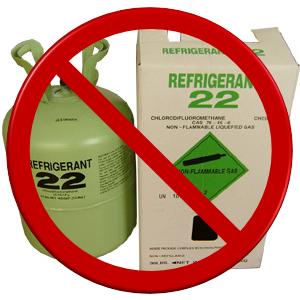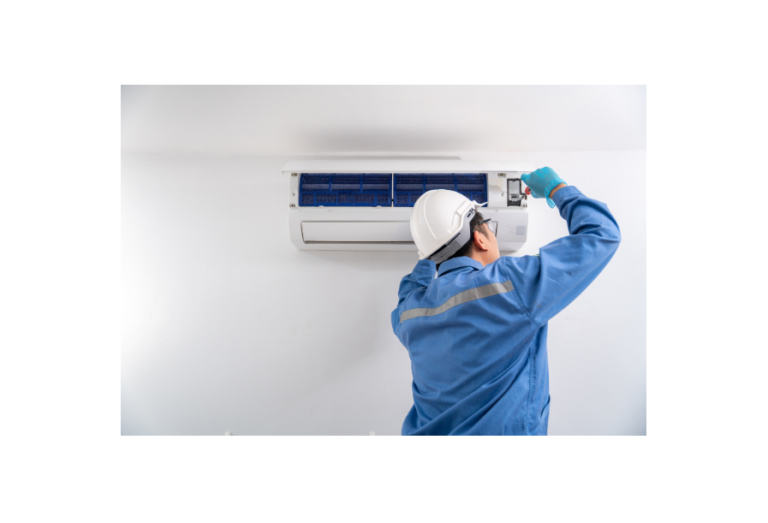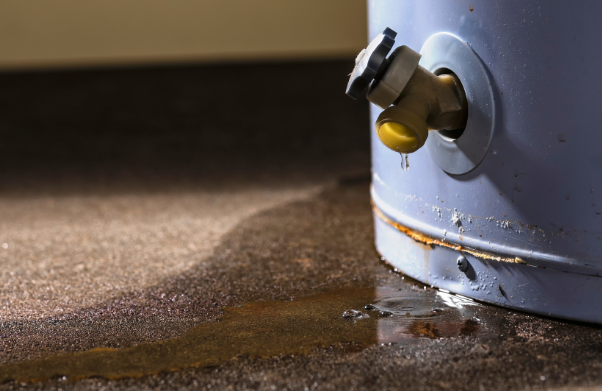
Elevating Realty: The Benefits of a Home Inspection by Architech Inspection Systems, Aligned with ASHI and InterNACHI Standards
Introduction
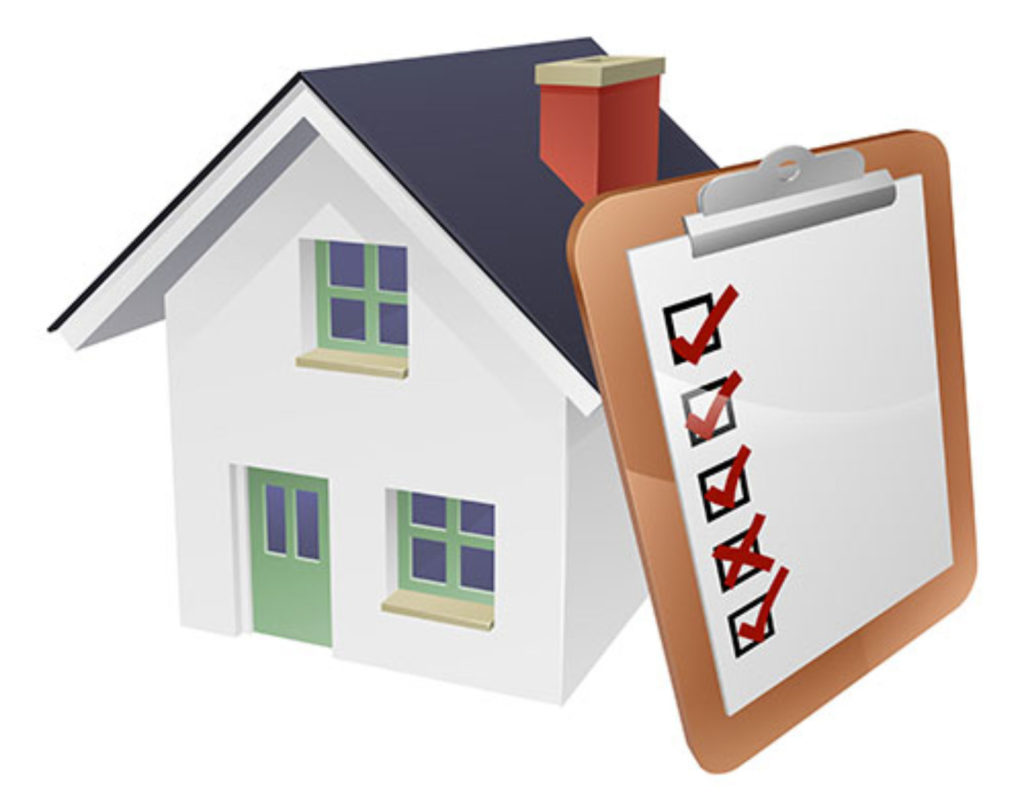
In the ever-evolving landscape of real estate, the role of a realtor is not just about transactions but about building trust and ensuring client satisfaction. A crucial aspect of this journey is a Home Inspection, especially when conducted by Architech Inspection Systems, boasting over 20 years of experience, more than 15,000 inspections, and adherence to the stringent standards set by the American Society of Home Inspectors (ASHI) and the International Association of Certified Home Inspectors (InterNACHI). Let’s explore the multitude of benefits that this seasoned and reputable inspection system brings to the table.
1. Decades of Expertise: Architech Inspection Systems at the Helm
Overview
Architech Inspection Systems brings to the forefront over 20 years of experience, making them seasoned experts in the field of home inspections. This wealth of knowledge is a valuable asset for realtors.
Benefits
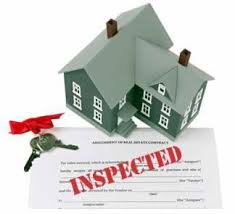
- In-Depth Industry Understanding: With over two decades of experience, Architech Inspection Systems has honed their understanding of the nuances of the real estate market, offering realtors insights that only come with time and experience.
- Established Reputation: A long-standing presence in the industry is a testament to the reliability and trustworthiness of Architech Inspection Systems, contributing to a positive perception among clients and realtors alike.
2. Extensive Inspection Portfolio: Over 15,000 Inspections and Counting
Overview
Having conducted more than 15,000 inspections, Architech Inspection Systems has a vast portfolio of inspected properties. This extensive experience adds depth and reliability to their assessments.
Benefits
- Diverse Property Insights: The extensive inspection portfolio means that Architech Inspection Systems has encountered a wide range of property types and conditions, providing realtors with a wealth of insights into various scenarios.
- Proven Track Record: The sheer volume of inspections speaks to the consistency and reliability of Architech Inspection Systems, giving realtors confidence in the accuracy of their assessments.
3. ASHI and InterNACHI Standards: A Commitment to Excellence
Overview

Architech Inspection Systems aligns with the rigorous standards set by ASHI and InterNACHI, emphasizing a commitment to excellence in the home inspection process.
Benefits
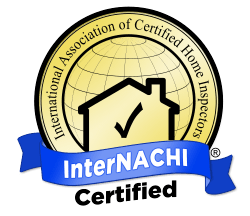
- Structured Inspection Protocols: Following ASHI and InterNACHI standards ensures that inspections are conducted with a structured and comprehensive approach, providing realtors with reliable and consistent assessments.
- Industry Recognition: Adherence to these widely recognized standards enhances the credibility of Architech Inspection Systems, contributing to a positive industry reputation that realtors can leverage.
4. Visual Documentation: Photos and Videos Enhancing Clarity
Overview
Architech Inspection Systems understands the power of visual documentation, incorporating photos and videos into their inspection process to enhance clarity and understanding.
Benefits
- Clear Communication: Visual elements in the inspection report provide realtors and clients with a clearer understanding of the property’s condition, facilitating better communication and informed decision-making.
- Transparent Presentation: Photos and videos add transparency to the inspection process, allowing realtors to present detailed and visual evidence of the property’s strengths and areas that may require attention.
5. Advanced Tools: Thermography and Moisture Meters
Overview

Architech Inspection Systems employs advanced tools such as thermography and moisture meters, elevating the precision of their inspections and uncovering potential issues that may go unnoticed.
Benefits
- Enhanced Precision: Tools like thermography and moisture meters contribute to the precision of the inspection, providing realtors with more accurate and detailed data about the property’s condition.
- Uncovering Hidden Issues: These advanced tools can reveal issues that may not be visible to the naked eye, allowing realtors to address potential concerns proactively.
6. State-of-the-Art Reporting Systems: Effortless Navigation
Overview
Architech Inspection Systems employs state-of-the-art reporting systems, ensuring that realtors and clients can navigate through the inspection findings with ease and efficiency.
Benefits
- User-Friendly Interface: A modern reporting system provides a user-friendly interface, making it convenient for realtors to access and share inspection reports with clients.
- Comprehensive Overview: The reporting system offers a comprehensive overview of the inspection findings, allowing realtors to quickly grasp the key points and discuss them with clients.
Conclusion
In the realm of real estate, a Home Inspection by Architech Inspection Systems, following ASHI and InterNACHI standards, is not just an assessment; it’s a strategic investment in transparency, reliability, and client satisfaction. With over 20 years of experience, a vast portfolio of inspections, and a commitment to excellence, Architech Inspection Systems stands as a reliable partner for realtors. The incorporation of advanced tools and state-of-the-art reporting systems further cements their position as industry leaders. As a realtor navigating the intricate landscape of real estate, embracing the benefits offered by Architech Inspection Systems is a step toward ensuring seamless transactions, satisfied clients, and a thriving real estate journey. Cheers to navigating excellence and success in every property endeavor!
____________________________________________________________________________
Our Standards of Practice & Code of Ethics

TABLE OF CONTENTS
The Standard of Practice for Home Inspections and Code of Ethics of the American Society of Home Inspectors Distribution of this material is not an indication of ASHI® Membership. To find an ASHI inspector, go to“Find an Inspector” at www.ashi.org. To obtain additional copies or request permission to reprint The ASHI® Standards of Practice for Home Inspections and Code of Ethics, contact: The American Society of Home Inspectors, Inc.® 932 Lee Street, Suite 101 Des Plaines, IL 60016 800-743-ASHI/2744 No part of this publication may be reproduced, stored in a retrieval system, or transmitted in any form or by any means, electronic, mechanical, photocopy, recording or otherwise, without the prior written consent of the publisher.
ASHI Standard of Practice for Home Inspections. . 1
Section Description
1. Introduction. . . . . . . . . . . . . . . . . . . . . . . . 2
2. Purpose and Scope. . . . . . . . . . . . . . . . . . 2
3. Structural Components. . . . . . . . . . . . . . 2
4. Exterior. . . . . . . . . . . . . . . . . . . . . . . . . . . . 2
5. Roofing. . . . . . . . . . . . . . . . . . . . . . . . . . . . .3
6. Plumbing. . . . . . . . . . . . . . . . . . . . . . . . . . .3
7. Electrical. . . . . . . . . . . . . . . . . . . . . . . . . . . 3
8. Heating (not applicable in Hawaii) . . . 4
9. Air Conditioning. . . . . . . . . . . . . . . . . . . . . 4
10. Interiors. . . . . . . . . . . . . . . . . . . . . . . . . . . .4
11. Insulation and Ventilation. . . . . . . . . . . .5
12. Fireplaces and Fuel. . . . . . . . . . . . . . . . . .5
Burning Appliances
13. General Limitations. . . . . . . . . . . . . . . . . .5
and Exclusions
14. Glossary of Terms. . . . . . . . . . . . . . . . . . . 7
Code of Ethics for the Home Inspection Professional. . . . . . . . . . . . . . . 8
HOME INSPECTION
Home inspections were being performed in the mid 1950s and by the early 1970s were considered by many consumers to be essential to the real estate transaction. The escalating demand was due to a growing desire by consumers to learn about the condition of a house prior to purchase. Meeting the expectations of consumers required a unique discipline, distinct from construction, engineering, architecture, or municipal building inspection. As such, home inspection requires its own set of professional guidelines and qualifications. The American Society of Home Inspectors (ASHI) formed in 1976 and established the ASHI Standard of Practice for Home Inspections and Code of Ethics to help buyers and sellers make real estate transaction decisions based on accurate information.
American Society of Home Inspectors
As the oldest and most respected organization of home inspectors in North America, ASHI takes pride in its position of leadership. Its Membership works to build public awareness of home inspection and to enhance the technical and ethical performance of home inspectors.
Standard of Practice for Home Inspections
The ASHI Standard of Practice for Home Inspections guides home inspectors in the performance of their inspections. Subject to regular review, the Standard of Practice for Home Inspections reflects information gained through surveys of conditions in the field and of the consumers’ interests and concerns. Vigilance has elevated ASHI’s Standard of Practice for Home Inspections so that today it is the most widely-accepted home inspection guideline and is recognized by many government and professional groups as the definitive standard for professional performance.
Code of Ethics for the Home Inspection Profession
ASHI’s Code of Ethics stresses the home inspector’s responsibility to report the results of the inspection in a fair, impartial, and professional manner, avoiding conflicts of interest.
ASHI Membership
Selecting the right home inspector can be as important as finding the right home. ASHI Certified Inspectors have performed no fewer than 250 fee-paid inspections in accordance with the ASHI Standard of Practice for Home Inspections. They have passed written examinations testing their knowledge of residential construction, defect recognition, inspection techniques, and report-writing, as well as ASHI’s Standard of Practice for Home Inspections and Code of Ethics. Membership in the American Society of Home Inspectors is well-earned and maintained only through meeting requirements for continuing education.
ASHI STANDARD OF PRACTICE FOR HOME INSPECTIONS
1. INTRODUCTION
The American Society of Home Inspectors®, Inc. (ASHI®) is a not-for-profit professional society established in 1976. Membership in ASHI is voluntary and its members are private home inspectors. ASHI’s objectives include promotion of excellence within the profession and continual improvement of its members’ inspection services to the public.
2. PURPOSE AND SCOPE
2.1 The purpose of this document is to establish a minimum standard (Standard) for home inspections performed by home inspectors who subscribe to this Standard. Home inspections performed using this Standard are intended to provide the client with information about the condition of inspected systems and components at the time of the home inspection.
2.2 The inspector shall:
A. inspect readily accessible, visually observable, installed systems and components listed in this Standard.
B. provide the client with a written report, using a format and medium selected by the inspector, that states:
1. those systems and components inspected that, in the professional judgment of the inspector, are not functioning properly, significantly deficient, unsafe, or are near the end of their service lives,
2. recommendations to correct, or monitor for future correction, the deficiencies reported in 2.2.B.1, or items needing further evaluation (Per Exclusion 13.2.A.5 the inspector is NOT required to determine methods, materials, or costs of corrections.),
3. reasoning or explanation as to the nature of the deficiencies reported in 2.2.B.1, that are not self-evident,
4. those systems and components designated for inspection in this Standard that were present at the time of the home inspection but were not inspected and the reason(s) they were not inspected.
C. adhere to the ASHI® Code of Ethics for the Home Inspection Profession.
2.3 This Standard is not intended to limit the inspector from:
A. including other services or systems and components in addition to those required in Section 2.2.A.
B. designing or specifying repairs, provided the inspector is appropriately qualified and willing to do so.
C. excluding systems and components from the inspection if requested or agreed to by the client.
3. STRUCTURAL COMPONENTS
3.1 The inspector shall:
A. inspect structural components including the foundation and framing.
B. describe:
1. the methods used to inspect under-floor crawlspaces and attics.
2. the foundation.
3. the floor structure.
4. the wall structure.
5. the ceiling structure.
6. the roof structure.
3.2 The inspector is NOT required to:
A. provide engineering or architectural services or analysis.
B. offer an opinion about the adequacy of structural systems and components.
C. enter under-floor crawlspace areas that have less than 24 inches of vertical clearance between components and the ground or that have an access opening smaller than 16 inches by 24 inches.
D. traverse attic load-bearing components that are concealed by insulation or by other materials.
4. EXTERIOR
4.1 The inspector shall:
A. inspect:
1. wall coverings, flashing, and trim.
2. exterior doors.
3. attached and adjacent decks, balconies, stoops, steps, porches, and their associated railings.
4. eaves, soffits, and fascias where accessible from the ground level.
5. vegetation, grading, surface drainage, and retaining walls that are likely to adversely affect the building.
6. adjacent and entryway walkways, patios, and driveways. B. describe wall coverings.
4.2 The inspector is NOT required to inspect:
A. screening, shutters, awnings, and similar seasonal accessories.
B. fences, boundary walls, and similar structures.
C. geological and soil conditions.
D. recreational facilities.
E. outbuildings other than garages and carports.
F. seawalls, break-walls, and docks.
G. erosion control and earth stabilization measures
5. ROOFING
5.1 The inspector shall:
A. inspect:
1. roofing materials.
2. roof drainage systems.
3. flashing.
4. skylights, chimneys, and roof penetrations.
B. describe:
1. roofing materials.
2. methods used to inspect the roofing.
5.2 The inspector is NOT required to inspect:
A. antennas.
B. interiors of vent systems, flues, and chimneys that are not readily accessible.
C. other installed accessories.
6. PLUMBING
6.1 The inspector shall:
A. inspect:
1. interior water supply and distribution systems including fixtures and faucets.
2. interior drain, waste, and vent systems including fixtures.
3. water heating equipment and hot water supply systems.
4. vent systems, flues, and chimneys.
5. fuel storage and fuel distribution systems.
6. sewage ejectors, sump pumps, and related piping.
B. describe:
1. interior water supply, drain, waste, and vent piping materials.
2. water heating equipment including energy source(s).
3. location of main water and fuel shut-off valves.
6.2 The inspector is NOT required to:
A. inspect:
1. clothes washing machine connections.
2. interiors of vent systems, flues, and chimneys that are not readily accessible.
3. wells, well pumps, and water storage related equipment. 4. water conditioning systems.
5. solar, geothermal, and other renewable energy water heating systems.
6. manual and automatic fire extinguishing and sprinkler systems and landscape irrigation systems.
7. septic and other sewage disposal systems.
B. determine:
1. whether water supply and sewage disposal are public or private.
2. water quality.
3. the adequacy of combustion air components.
C. measure water supply flow and pressure, and well water quantity.
D. fill shower pans and fixtures to test for leaks.
7. ELECTRICAL
7.1 The inspector shall:
A. inspect:
1. service drop.
2. service entrance conductors, cables, and raceways.
3. service equipment and main disconnects.
4. service grounding.
5. interior components of service panels and subpanels.
6. conductors.
7. overcurrent protection devices.
8. a representative number of installed lighting fixtures, switches, and receptacles.
9. ground fault circuit interrupters and arc fault circuit interrupters.
B. describe:
1. amperage rating of the service.
2. location of main disconnect(s) and subpanels.
3. presence or absence of smoke alarms and carbon monoxide alarms.
4. the predominant branch circuit wiring method.
7.2 The inspector is NOT required to:
A. inspect:
1. remote control devices.
2. or test smoke and carbon monoxide alarms, security systems, and other signaling and warning devices.
3. low voltage wiring systems and components.
4. ancillary wiring systems and components not a part of the primary electrical power distribution system.
5. solar, geothermal, wind, and other renewable energy systems.
B. measure amperage, voltage, and impedance.
C. determine the age and type of smoke alarms and carbon monoxide alarms.
8. HEATING (Not Applicable to Oahu, Hawai’i)
8.1 The inspector shall:
A. open readily openable access panels.
B. inspect: 1. installed heating equipment.
2. vent systems, flues, and chimneys.
3. distribution systems.
C. describe:
1. energy source(s).
2. heating systems.
8.2 The inspector is NOT required to:
A. inspect:
1. interiors of vent systems, flues, and chimneys that are not readily accessible.
2. heat exchangers.
3. humidifiers and dehumidifiers.
4. electric air cleaning and sanitizing devices.
5. heating systems using ground-source, water-source, solar, and renewable energy technologies.
6. heat-recovery and similar whole-house mechanical ventilation systems. B. determine:
1. heat supply adequacy and distribution balance.
2. the adequacy of combustion air components
9. AIR CONDITIONING
9.1 The inspector shall:
A. open readily openable access panels.
B. inspect:
1. central and permanently installed cooling equipment.
2. distribution systems.
C. describe:
1. energy source(s).
2. cooling systems.
9.2 The inspector is NOT required to:
A. inspect electric air cleaning and sanitizing devices.
B. determine cooling supply adequacy and distribution balance.
C. inspect cooling units that are not permanently installed or that are installed in windows.
D. inspect cooling systems using ground-source, water-source, solar, and renewable energy technologies.
10. INTERIORS
10.1 The inspector shall inspect:
A. walls, ceilings, and floors.
B. steps, stairways, and railings.
C. countertops and a representative number of installed cabinets.
D. a representative number of doors and windows.
E. garage vehicle doors and garage vehicle door operators.
F. installed ovens, ranges, surface cooking appliances, microwave ovens, dishwashing machines, and food waste grinders by using normal operating controls to activate the primary function.
10.2 The inspector is NOT required to inspect:
A. paint, wallpaper, and other finish treatments.
B. floor coverings.
C. window treatments.
D. coatings on and the hermetic seals between panes of window glass.
E. central vacuum systems.
F. recreational facilities.
G. installed and free-standing kitchen and laundry appliances not listed in Section 10.1.F.
H. appliance thermostats including their calibration, adequacy of heating elements, self cleaning oven cycles, indicator lights, door seals, timers, clocks, timed features, and other specialized features of the appliance.
I. operate, or confirm the operation of every control and feature of an inspected appliance.
11. INSULATION AND VENTILATION
11.1 The inspector shall:
A. inspect:
1. insulation and vapor retarders in unfinished spaces.
2. ventilation of attics and foundation areas.
3. kitchen, bathroom, laundry, and similar exhaust systems.
4. clothes dryer exhaust systems.
B. describe:
1. insulation and vapor retarders in unfinished spaces.
2. absence of insulation in unfinished spaces at conditioned surfaces.
11.2 The inspector is NOT required to disturb insulation.
12. FIREPLACES AND FUEL-BURNING APPLIANCES
12.1 The inspector shall:
A. inspect:
1. fuel-burning fireplaces, stoves, and fireplace inserts.
2. fuel-burning accessories installed in fireplaces.
3. chimneys and vent systems.
B. describe systems and components listed in 12.1.A.1 and .2.
12.2 The inspector is NOT required to:
A. inspect: 1. interiors of vent systems, flues, and chimneys that are not readily accessible.
2. fire screens and doors.
3. seals and gaskets.
4. automatic fuel feed devices.
5. mantles and fireplace surrounds.
6. combustion air components and to determine their adequacy.
7. heat distribution assists (gravity fed and fan assisted).
8. fuel-burning fireplaces and appliances located outside the inspected structures.
B. determine draft characteristics.
C. move fireplace inserts and stoves or firebox contents.
13. GENERAL LIMITATIONS AND EXCLUSIONS
13.1 General limitations
A. The inspector is NOT required to perform actions, or to make determinations, or to make recommendations not specifically stated in this Standard.
B. Inspections performed using this Standard: 1. are not technically exhaustive.
2. are not required to identify and to report:
a. concealed conditions, latent defects, consequential damages, and
b. cosmetic imperfections that do not significantly affect a component’s performance of its intended function.
C. This Standard applies to buildings with four or fewer dwelling units and their attached and detached garages and carports.
D. This Standard shall not limit or prevent the inspector from meeting state statutes which license professional home inspection and home inspectors.
E. Redundancy in the description of the requirements, limitations, and exclusions regarding the scope of the home inspection is provided for emphasis only.
13.2 General exclusions
A. The inspector is NOT required to determine:
1. the condition of systems and components that are not readily accessible.
2. the remaining life expectancy of systems and components.
3. the strength, adequacy, effectiveness, and efficiency of systems and components.
4. the causes of conditions and deficiencies.
5. methods, materials, and costs of corrections.
6. future conditions including but not limited to failure of systems and components.
7. the suitability of the property for specialized uses
8. compliance of systems and components with past and present requirements and guidelines (codes, regulations, laws, ordinances, specifications, installation and maintenance instructions, use and care guides, etc.).
9. the market value of the property and its marketability.
10. the advisability of purchasing the property.
11. the presence of plants, animals, and other life forms and substances that may be hazardous or harmful to humans including, but not limited to, wood destroying organisms, molds and mold-like substances.
12. the presence of environmental hazards including, but not limited to, allergens, toxins, carcinogens, electromagnetic radiation, noise, radioactive substances, and contaminants in building materials, soil, water, and air.
13. the effectiveness of systems installed and methods used to control or remove suspected hazardous plants, animals, and environmental hazards.
14. operating costs of systems and components.
15. acoustical properties of systems and components.
16. soil conditions relating to geotechnical or hydrologic specialties.
17. whether items, materials, conditions and components are subject to recall, controversy, litigation, product liability, and other adverse claims and conditions.
B. The inspector is NOT required to offer:
1. or to perform acts or services contrary to law or to government regulations.
2. or to perform architectural, engineering, contracting, or surveying services or to confirm or to evaluate such services performed by others.
3. or to perform trades or professional services other than home inspection.
4. warranties or guarantees.
C. The inspector is NOT required to operate:
1. systems and components that are shut down or otherwise inoperable.
2. systems and components that do not respond to normal operating controls.
3. shut-off valves and manual stop valves.
4. automatic safety controls
D. The inspector is NOT required to enter:
1. areas that will, in the professional judgment of the inspector, likely be dangerous to the inspector or to other persons, or to damage the property or its systems and components.
2. under-floor crawlspaces and attics that are not readily accessible
E. The inspector is NOT required to inspect:
1. underground items including, but not limited to, underground storage tanks and other underground indications of their presence, whether abandoned or active.
2. items that are not installed.
3. installed decorative items.
4. items in areas that are not entered in accordance with 13.2.D.
5. detached structures other than garages and carports.
6. common elements and common areas in multiunit housing, such as condominium properties and cooperative housing.
7. every occurrence of multiple similar components. 8. outdoor cooking appliances.
F. The inspector is NOT required to:
1. perform procedures or operations that will, in the professional judgment of the inspector, likely be dangerous to the inspector or to other persons, or to damage the property or its systems or components.
2. describe or report on systems and components that are not included in this Standard and that were not inspected.
3. move personal property, furniture, equipment, plants, soil, snow, ice, and debris.
4. dismantle systems and components, except as explicitly required by this Standard.
5. reset, reprogram, or otherwise adjust devices, systems, and components affected by inspection required by this Standard.
6. ignite or extinguish fires, pilot lights, burners, and other open flames that require manual ignition.
7. probe surfaces that would be damaged or where no deterioration is visible or presumed to exist.
14. GLOSSARY OF TERMS
Automatic Safety Controls Devices designed and installed to protect systems and components from unsafe conditions
Component A part of a system
Decorative Ornamental; not required for the proper operation of the essential systems and components of a home
Describe To identify (in writing) a system and component by its type or other distinguishing characteristics
Dismantle To take apart or remove components, devices, or pieces of equipment that would not be taken apart or removed by a homeowner in the course of normal maintenance
Engineering The application of scientific knowledge for the design, control, or use of building structures, equipment, or apparatus
Further Evaluation Examination and analysis by a qualified professional, tradesman, or service technician beyond that provided by a home inspection
Home Inspection The process by which an inspector visually examines the readily accessible systems and components of a home and describes those systems and components using this Standard
Inspect The process of examining readily accessible systems and components by (1) applying this Standard, and (2) operating normal operating controls, and (3) opening readily openable access panels
Inspector A person hired to examine systems and components of a building using this Standard
Installed Attached such that removal requires tools
Normal Operating Controls Devices such as thermostats, switches, and valves intended to be operated by the homeowner
Readily Accessible Available for visual inspection without requiring moving of personal property, dismantling, destructive measures, or actions that will likely involve risk to persons or property
Readily Openable Access Panel A panel provided for homeowner inspection and maintenance that is readily accessible, within normal reach, can be opened by one person, and is not sealed in place
Recreational Facilities Spas, saunas, steam baths, swimming pools, exercise, entertainment, athletic, playground and other similar equipment, and associated accessories
Representative Number One component per room for multiple similar interior components such as windows and electric receptacles; one component on each side of the building for multiple similar exterior components
Roof Drainage Systems Components used to carry water off a roof and away from a building
Shut Down A state in which a system or component cannot be operated by normal operating controls
Structural Component A component that supports non-variable forces or weights (dead loads) and variable forces or weights (live loads)
System A combination of interacting or interdependent components, assembled to carry out one or more functions
Technically Exhaustive An investigation that involves dismantling, the extensive use of advanced techniques, measurements, instruments, testing, calculations, or other means
Under-floor Crawlspace The area within the confines of the foundation and between the ground and the underside of the floor
Unsafe A condition in a readily accessible, installed system or component that is judged by the inspector to be a significant risk of serious bodily injury during normal, day-to-day use; the risk may be due to damage, deterioration, improper installation, or a change in accepted residential construction practices
Wall Covering A protective or insulating layer fixed to the outside of a building such as: aluminum, brick, EIFS, stone, stucco, vinyl, and wood
Wiring Method Identification of electrical conductors or wires by their general type, such as non-metallic sheathed cable, armored cable, and knob and tube, etc.
______________________________________________________________________

ASHI® CODE OF ETHICS For the Home Inspection Profession
Integrity, honesty, and objectivity are fundamental principles embodied by this Code, which sets forth obligations of ethical conduct for the home inspection profession. The Membership of ASHI has adopted this Code to provide high ethical standards to safeguard the public and the profession.
Inspectors shall comply with this Code, shall avoid association with any enterprise whose practices violate this Code, and shall strive to uphold, maintain, and improve the integrity, reputation, and practice of the home inspection profession.
1. Inspectors shall avoid conflicts of interest or activities that compromise, or appear to compromise, professional independence, objectivity, or inspection integrity.
A. Inspectors shall not inspect properties for compensation in which they have, or expect to have, a financial interest.
B. Inspectors shall not inspect properties under contingent arrangements whereby any compensation or future referrals are dependent on reported findings or on the sale of a property.
C. Inspectors shall not directly or indirectly compensate realty agents, or other parties having a financial interest in closing or settlement of real estate transactions, for the referral of inspections or for inclusion on a list of recommended inspectors, preferred providers, or similar arrangements.
D. Inspectors shall not receive compensation for an inspection from more than one party unless agreed to by the client(s).
E. Inspectors shall not accept compensation, directly or indirectly, for recommending contractors, services, or products to inspection clients or other parties having an interest in inspected properties.
F. Inspectors shall not repair, replace, or upgrade, for compensation, systems or components covered by ASHI Standards of Practice, for one year after the inspection.
2. Inspectors shall act in good faith toward each client and other interested parties.
A. Inspectors shall perform services and express opinions based on genuine conviction and only within their areas of education, training, or experience.
B. Inspectors shall be objective in their reporting and not knowingly understate or overstate the significance of reported conditions.
C. Inspectors shall not disclose inspection results or client information without client approval. Inspectors, at their discretion, may disclose observed immediate safety hazards to occupants exposed to such hazards, when feasible.
3. Inspectors shall avoid activities that may harm the public, discredit themselves, or reduce public confidence in the profession.
A. Advertising, marketing, and promotion of inspectors’ services or qualifications shall not be fraudulent, false, deceptive, or misleading.
B. Inspectors shall report substantive and willful violations of this Code to the Society.
